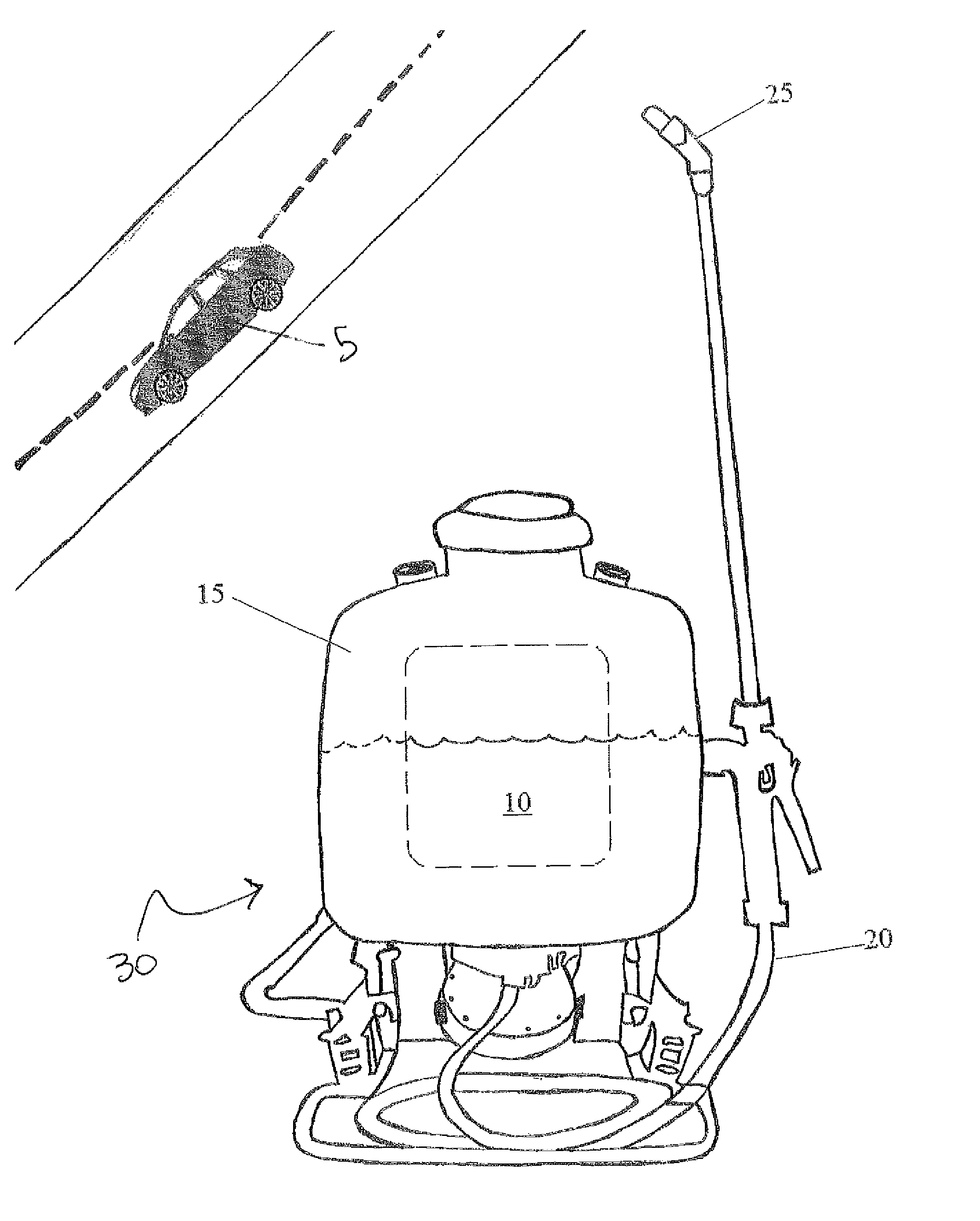Method to arrest growth of invasive species' seeds while in non-natural environment prior to transport
a technology of invasive species and seedlings, applied in the direction of horticulture, dead animal preservation, climate sustainability, etc., can solve the problems of affecting the spread of invasive species, destroying natural, native environments, undesired seeds may be lodged on the undercarriage or other surfaces of the mobile apparatus, etc., and achieve the effect of convenient
- Summary
- Abstract
- Description
- Claims
- Application Information
AI Technical Summary
Benefits of technology
Problems solved by technology
Method used
Image
Examples
Embodiment Construction
[0018]Reference will now be made in detail to embodiments of the invention, examples of which are illustrated in the accompanying drawings. Throughout the following detailed description, the same reference characters refer to the same or similar elements in all figures.
[0019]FIG. 1 depicts one embodiment of the means to apply said rinse agent to a mobile apparatus 5. The spray equipment 30 comprising a nozzle portion 25, a reservoir portion 15 and a liquid transfer portion 20 in contact with both the nozzle portion 25 and the reservoir portion 15 such that the rinse agent 10 contained in the reservoir portion 15 can flow through the fluid transfer portion and out the nozzle via the fluid transfer portion and be applied to the mobile apparatus 5.
[0020]The step of applying the rinse agent to the mobile apparatus includes spraying the rinse agent to the outer surface and underneath surface of said mobile apparatus. It is further contemplated within the scope of this invention that the ...
PUM
 Login to View More
Login to View More Abstract
Description
Claims
Application Information
 Login to View More
Login to View More - R&D
- Intellectual Property
- Life Sciences
- Materials
- Tech Scout
- Unparalleled Data Quality
- Higher Quality Content
- 60% Fewer Hallucinations
Browse by: Latest US Patents, China's latest patents, Technical Efficacy Thesaurus, Application Domain, Technology Topic, Popular Technical Reports.
© 2025 PatSnap. All rights reserved.Legal|Privacy policy|Modern Slavery Act Transparency Statement|Sitemap|About US| Contact US: help@patsnap.com

